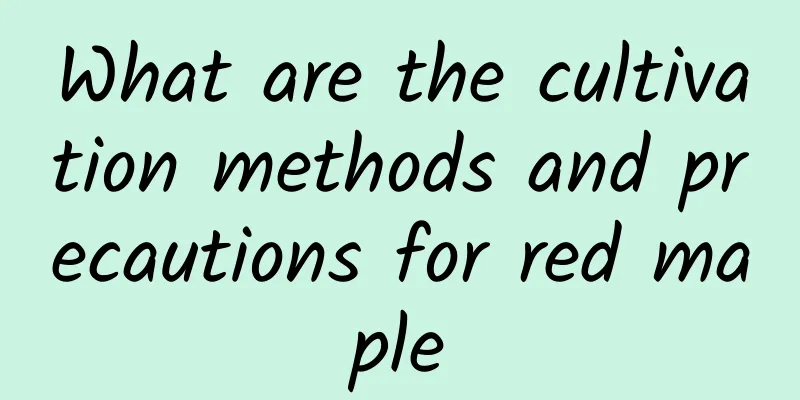Notes on flower cultivation: Fertilizer

16 nutrients needed for flower growthCarbon, hydrogen, oxygen (found in air and water) Nitrogen, phosphorus, potassium, sulfur, calcium, magnesium Iron, boron, zinc, copper, manganese, molybdenum, chlorine Fertilizer TypeOrganic FertilizerFertilizer formed by processing, fermenting and composting animal and plant residues or excrement. Organic fertilizers contain all the nutrients needed by flowers. After being applied into the soil, the nutrients are gradually decomposed. Although the effect is slow, the fertilizer effect is long-lasting and can also improve the soil, which is beneficial to the development of the root system and the activity of beneficial fungi in the soil. Commonly used organic fertilizers include: livestock and poultry manure, fish meal, bone meal, wood ash, various cake fertilizers and sesame oil residue. Inorganic fertilizer (chemical fertilizer)Fertilizer made by chemical means or processed from natural minerals. It has the advantages of high nutrient content, quick effect, easy use, cleanliness and hygiene, but its nutrient composition is single and long-term use can easily cause the soil to become compacted. Commonly used ones are: urea, ammonium sulfate, nitric acid, potassium dihydrogen phosphate, potassium chloride, potassium nitrate, etc. And compound fertilizers that have been processed and compounded and contain the three elements of nitrogen, phosphorus and potassium. Organic preparation for home gardeningYard CompostUse the shady corners of the courtyard to build pits, and pile up the vegetable stems and leaves, bean shells, claw fruit peels, herbal residue, eggshells, shrimp and crab shells, poultry feathers, fish scales, fish viscera, weeds, fallen leaves, etc. that you pick up daily to let ferment. To prevent the odor from escaping, you can seal it with mud or plastic film. Home bottlingUse small-mouthed waste plastic bottles such as Coke bottles and oil-blending bottles as containers, fill them with fish scales, fish organs, eels, shrimp shells and other animal by-products, and ferment and decompose them to make high-quality liquid quick-acting fertilizer. You can also use rotten soybeans to soak and ferment them. Precautions for preparing bottled organic fertilizer① The amount of fish waste injected should be about 1/2~2/3 of the bottle capacity. Add water until it reaches close to the mouth of the bottle (leave some space). ② In order to reduce the odor during fertilizer fermentation, you can add some orange peels at the same time. Generally, a 2.5-liter mixing oil bottle can hold 3 to 4 orange peels. The orange peel can be torn into pieces or cut into small pieces and then put down. You can use fresh orange peel or dried old orange peel. ③ After preparation, the bottle cap must be tightened and then moved back 2 to 3 teeth to leave an air gap. Otherwise, due to fermentation in the bottle, the gas will expand and rush out of the bottle cap, causing the unbearable consequence of foul odor. ④ It takes 4 to 5 months for bottled organic fertilizer to ferment in the summer. It usually takes about a year to mature. The solution can be diluted with water to water the flowers. Utilization of broad bean shellsGreen broad bean pods are rich in nitrogen, phosphorus and potassium nutrients. They are easy to collect in cities and are clean and hygienic. During preparation, the pods can be exposed to the sun to dry, ground and stored for later use. They can be mixed into the making of potting soil, or used as base fertilizer when repotting potted flowers and planting. Reasonable fertilizationBase fertilizer, topdressing, foliar fertilizationbase fertilizer It mainly uses organic fertilizers that decompose slowly and have long fertilizer effects. For use during the growing season of flowers throughout the year. For garden flower cultivation, in winter or early spring, dig trenches or holes around the main planted flowers and trees and bury the fertilizer deeply, or apply the fertilizer at the same time when tilling the soil before planting. For potted flowers, it can be added when preparing the culture soil, or applied to the bottom of the flowerpot before planting. Commonly used base fertilizers include compost made from animal and plant residues, dry poultry and livestock manure, and decomposed cake fertilizer crumbs. Cities can use the residue from small-milled sesame oil, which has a good fertilizer effect. You can also use fried or boiled soybeans to inject into the middle and lower layers of potted flowers as a supplementary base fertilizer. top dressing Inorganic fertilizers that take effect quickly and can be quickly absorbed and utilized by flowers, or the extract of fermented organic fertilizers, can be added when needed at various stages of flower growth and development. Commonly used ones include urea, potassium dihydrogen phosphate, etc. Foliar Fertilization Also known as foliar fertilization, it is a process of dissolving chemical fertilizers in water and spraying them on plants, allowing the nutrients to penetrate into the plant body through the back of the leaves. It is easy to operate and has quick results. Please note when applying: the concentration of fertilizer should be controlled at 0.1-0.2%. Too high a concentration will cause damage to plants. Flowers planted on balconies and outdoors should be sprayed with fertilizer in the evening to prevent them from being exposed to the sun after fertilization, which will increase the fertilizer concentration and cause fertilizer damage. When spraying, pay attention to the back of the leaves. Fertilization principles and methodsSuitable for flowers Foliage plants should use more nitrogen fertilizer, while fruit and flowering plants should use more phosphorus and potassium fertilizers. Timely Nitrogen fertilizer is the main fertilizer when branches and leaves are sprouting, while phosphorus and potassium fertilizers are the main fertilizers when flower buds are differentiating and forming buds and before flowering. Adapting to the situation - "Four more, four less, four no" Apply more fertilizer when the plants are yellow and thin, before germination, before bud formation, and after flowering. Apply less fertilizer during germination, less fertilizer during flowering, and less fertilizer during the rainy season. Do not apply fertilizer to newly planted plants, to plants that are growing too tall, to plants that are sick or weak, or in midsummer. Moderate For organic fertilizer, add 7-8 parts of water to 2-3 parts of fertilizer; for chemical fertilizer , use a concentration of 0.1-0.3 %. Diligent Once every 7-10 days during the growing season. Three taboos in fertilizationAvoid concentrated fertilizers, as they cause cell fluid extravasation and death. Avoid hot fertilizers. The soil temperature is high at noon in summer, and topdressing will damage the roots. Avoid sitting on fertilizer. After applying base fertilizer to the bottom of the potted flower pot, cover it with a thin layer of soil first. When planting flowers, avoid having the roots sit directly on fertilizer. |
<<: Notes on flower cultivation: reproduction
>>: How to promote asparagus fern seeding
Recommend
Can roses be planted in pots?
Can roses be planted in pots? Roses can be plante...
Can rice water be used to water flowers? The effects and methods of rice water watering flowers
Can rice water be used to water flowers? Rice sou...
How to fertilize Silver Queen
Soil and Fertilization To cultivate Silver Queen,...
How long is the growth cycle of walnuts?
Introduction to Walnut Growth Walnuts are mainly ...
How to grow bean sprouts
1. Maintenance methods 1. Temperature: Bean sprou...
The flower language and meaning of the precious lotus, what are the taboos of giving it as a gift?
1. The flower language and meaning of the lotus T...
How to propagate pod fern
How to propagate pod fern There are two ways to p...
Cultivation methods and precautions of Babaoshu
1. Soil It is best to use sandy soil with strong ...
Which plants need to be supplemented with ferrous sulfate (which flowers are suitable and how to use it)
Ferrous sulfate is an inorganic salt with no odor...
When is the best time to plant red beans (the best time and method to plant red beans)
What is the best month to plant red beans? The so...
Best time to prune orange trees
Orange Tree Pruning Time Orange trees need to be ...
Cultivation methods and precautions of bicolor jasmine
1. Flower soil When growing bicolor jasmine, you ...
How to propagate Jade Plant
The sowing propagation method of Jade Leaf The mo...
Why doesn't the crab claw orchid bloom?
1. Why doesn't it bloom? 1. Temperature: The ...
What to plant to make money in 2022 (What medicinal herbs to plant in rural areas to make money without worrying about sales)
Since the beginning of 2021, the prices of more t...









